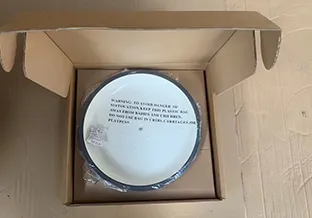
cast iron skillet cleaning kit
The Essential Guide to Cleaning Your Cast Iron Skillet A Cleaning Kit Overview
Cast iron skillets have long been revered by home cooks and professional chefs alike for their versatility and heat retention. Proper care ensures that these kitchen workhorses last for generations. However, cleaning a cast iron skillet can be daunting, especially for those new to using this cookware. That's where a cast iron skillet cleaning kit comes into play, making maintenance easier and more effective. In this article, we’ll explore the key components of a cleaning kit and provide tips for keeping your skillet in top shape.
Why Clean Your Cast Iron Skillet?
Before diving into the cleaning kit specifics, it’s important to understand why maintaining a cast iron skillet is crucial. Unlike other materials, cast iron requires special care to preserve its seasoning—a natural surface coating that prevents rust and provides non-stick properties. Neglecting to clean your skillet properly can lead to a build-up of food residue, rust, or a damaged seasoning layer, ultimately affecting flavor and cooking performance.
Key Components of a Cast Iron Skillet Cleaning Kit
A well-rounded cast iron skillet cleaning kit typically includes the following
1. Scrub Brush A sturdy scrub brush or a specialized cast iron brush is essential for cleaning off stuck-on food without damaging the seasoned surface. Look for brushes with stiff bristles that can easily tackle tough grime.
2. Chainmail Scrubber This innovative tool is designed specifically for cast iron. Made of stainless steel rings, it effectively removes stubborn food particles while being gentle on the skillet's seasoning. Just a little bit of water and some light scrubbing are usually all you need.
3. Heat-Resistant Gloves When working with a hot skillet, safety is a priority. A good pair of heat-resistant gloves will protect your hands while handling and cleaning your cookware, allowing you to safely scrub and rinse without burning yourself.
4. Flavor Neutral Oil After cleaning, it’s important to re-season your skillet to maintain its non-stick surface and prevent rust. A small bottle of flavor-neutral oil, such as canola or grapeseed oil, can help restore and maintain the seasoning after each cleaning session.
cast iron skillet cleaning kit

5. Lint-Free Cloth or Paper Towels For drying your skillet, opt for lint-free cloths or paper towels. These materials help prevent mess and ensure that your skillet is completely dry post-cleaning, which is vital in avoiding rust.
6. Seasoning Wax Some cleaning kits include seasoning wax, which can enhance the non-stick surface and provide an extra layer of protection against moisture. This can be especially useful if your skillet has been subjected to heavy use or has seen better days.
Best Practices for Cleaning Your Cast Iron Skillet
1. Immediate Cleaning After cooking, allow your skillet to cool slightly but clean it while it's still warm. This helps prevent food from hardening and sticking, making the cleaning process much easier.
2. Use Water Sparingly Rinse your skillet with warm water, using your scrub brush or chainmail scrubber to remove any food particles. Avoid soaking your skillet or using soap, as this can strip the seasoning.
3. Dry Thoroughly Once cleaned, dry your skillet immediately with a lint-free cloth. To prevent rust, place it on a low heat burner for a few minutes to ensure all moisture evaporates.
4. Re-season Regularly Apply a thin layer of oil after drying your skillet to help maintain its non-stick surface and protect it from moisture.
5. Store Properly Store your skillet in a dry place, ideally with a paper towel inside to absorb any residual moisture. This will help keep your skillet in optimal condition.
Conclusion
A cast iron skillet cleaning kit is an invaluable investment for anyone who owns this versatile kitchen tool. With the right tools and techniques at your disposal, cleaning and maintaining your skillet can become a straightforward and satisfying task. Regular care not only extends the life of your cast iron cookware but also enhances your culinary experience, allowing you to enjoy delicious meals prepared with a well-seasoned skillet. With these tips and the essential components of a cleaning kit, you’ll be well on your way to becoming a cast iron expert. Happy cooking!
-
Season Cast Iron Perfectly with GPT-4 Turbo TipsNewsAug.01,2025
-
High Quality Cast Iron Cookware - Baixiang County Zhongda MachineryNewsAug.01,2025
-
Premium Cast Iron Pan: Durable & Perfect HeatNewsAug.01,2025
-
High Quality Kitchen Durable Black Round Cast Iron Cookware Pancake Crepe Pan-Baixiang County Zhongda Machinery Manufacturing Co., Ltd.NewsAug.01,2025
-
Cast Iron Cookware - Baixiang County Zhongda Machinery | Nonstick, Heat ResistanceNewsAug.01,2025
-
High Quality Kitchen Durable Black Round Cast Iron Cookware - Baixiang County Zhongda Machinery | Non-Stick, Heat Retention, DurableNewsJul.31,2025


